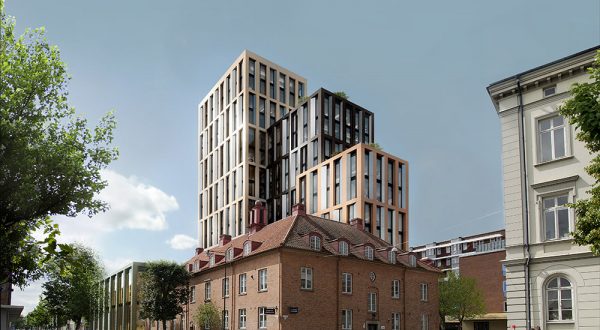
© Cédric Helsly
The digital revolution is giving rise to new forms of work and employment. For those who design and operate tertiary property, this means rethinking space.
“Tomorrow people will work anywhere but the office”. This statement is perhaps less surprising than it may seem. Current projections of future working patterns challenge the notion that the office is the only place where tertiary activities can be carried out.
In an age where the digital boom has made it possible for everyone to be connected any time and any place, “distributed working”, in other words working across different locations (at home, in cafés, on the train, in co-working spaces or public gardens, etc.) and in segmented timeframes, is no longer limited to intellectual and creative professions alone.
The business itself becomes an ideal hub for multiple activities. “So far, work spaces have been designed around two central and static components: the office and the meeting room. The system now needs to be rebuilt around the concept of tasks and encounters, with a particular focus on modularity,” explains David Ernest, Innovation and Energy Director at VINCI Facilities.
Anything that encourages an exchange of ideas or collective intelligence is being explored.
Brainstorming rooms, break-out areas, project spaces, videoconferencing rooms, rapid prototyping workshops, active-learning style training rooms, and chill-out areas in which to relax: anything that encourages an exchange of ideas or collective intelligence and that promotes the emergence of chance projects – so-called serendipity – is being explored by designers and managers of tertiary buildings.
“Offices are constantly evolving to adapt to new practices. Space will inevitably be freed up. Companies, for which rent is the second largest cost after payroll, will have to use this resource one way or another, for example by opening it up to external users, whether they are professionals or not,” believes David Ernest.
New forms of employment
The emergence of new forms of employment could accelerate the trend. Indeed, the practice of “distributed working” is now starting to go hand in hand with that of “distributed employment”, which refers to self-employed workers, interim managers, employee-entrepreneurs, open contributors, “slashers” (people who have multiple roles or who work for multiple companies), and so on.
Beyond individual situations and motivations, these new forms of employment are all moving in the same direction: towards a hybridisation of activities, types of status and contracts. And the tertiary property sector will have to do something about it very quickly.
16/02/2017


